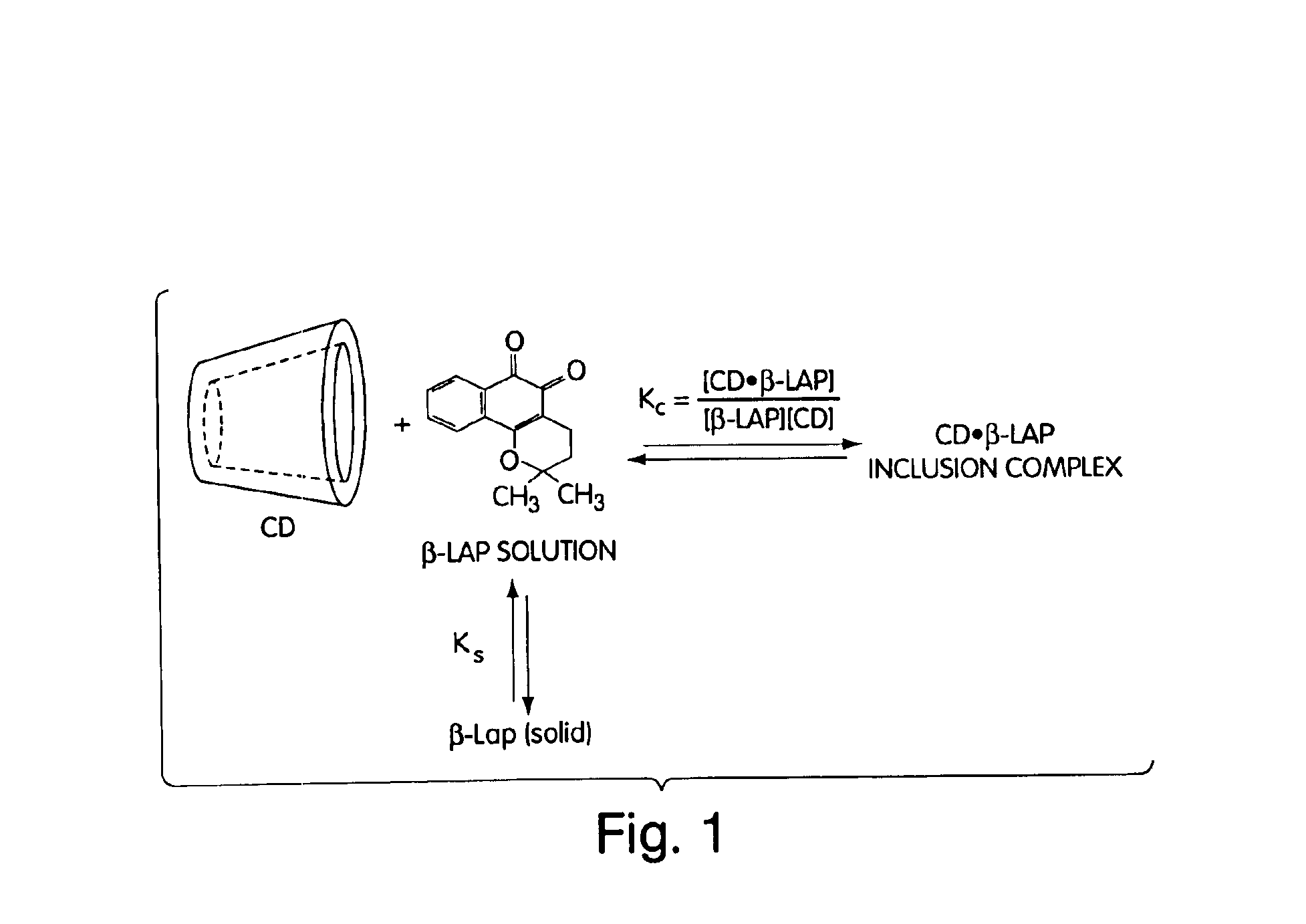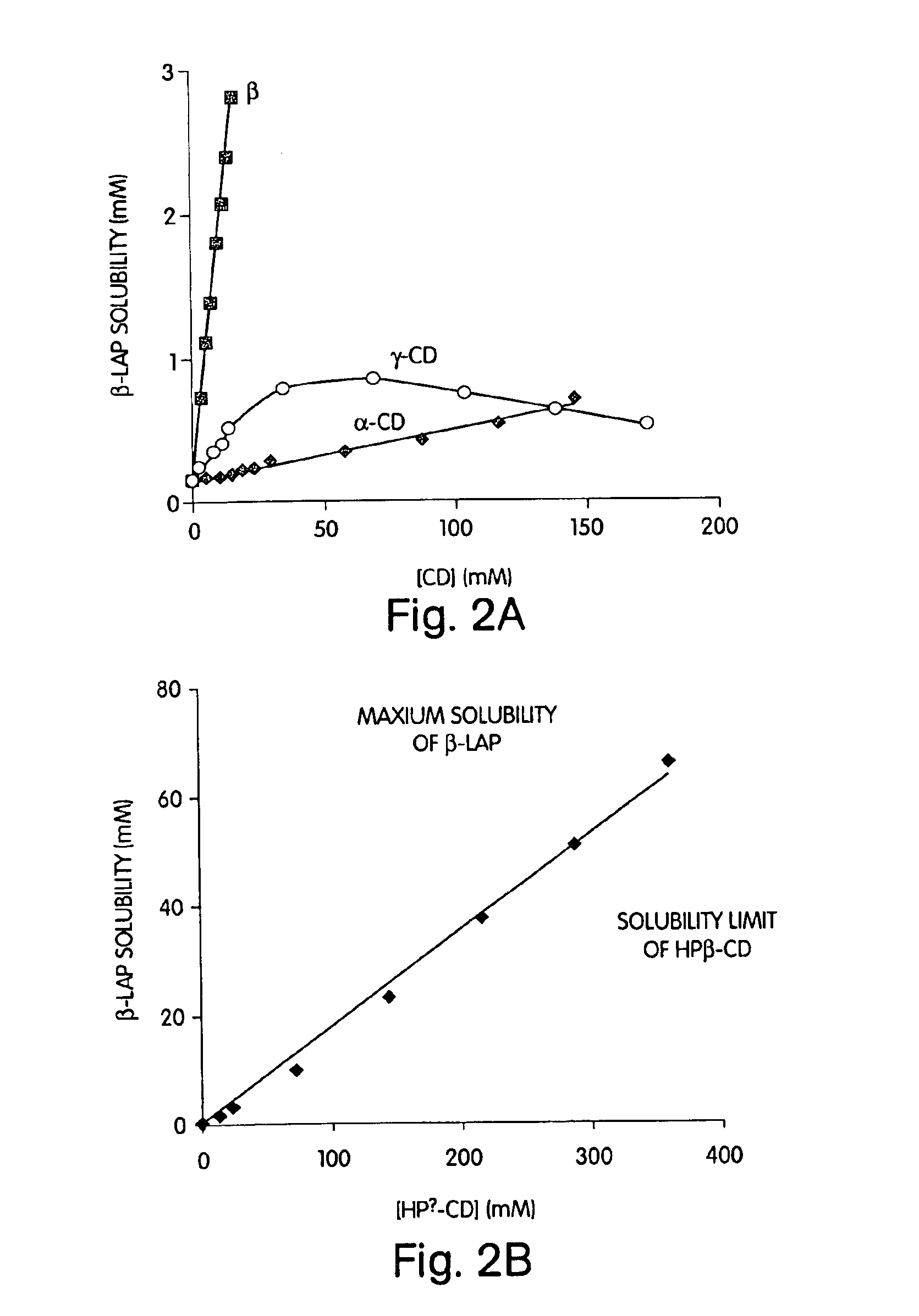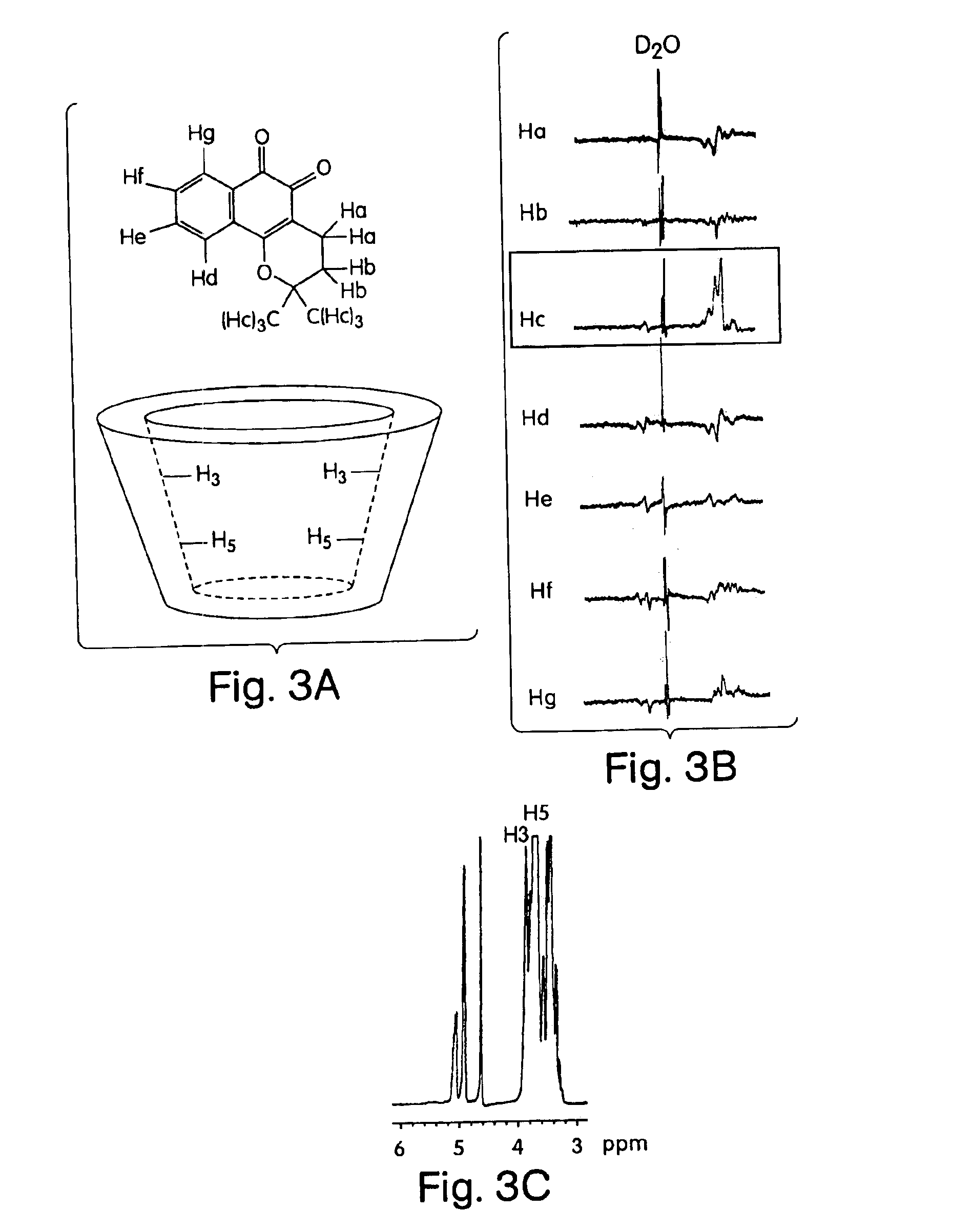Lapachone delivery systems, compositions and uses related thereto
a technology of lapachone and composition, applied in the field of potent cytotoxic agents, can solve the problems of limiting the potential for systemic administration and clinical applications, limiting the solubility of lapachone in common solvents, and limiting the solubility or bioavailability of lapachone. the effect of improving the solubility or bioavailability of lapachon
- Summary
- Abstract
- Description
- Claims
- Application Information
AI Technical Summary
Benefits of technology
Problems solved by technology
Method used
Image
Examples
Embodiment Construction
1. Overview
[0037]The present invention relates to strategies for the delivery of a lapachone or a prodrug thereof to a patient in need thereof, including sustained release delivery, through a wide variety of routes, including microspheres and nanospheres for injection or inhalation. The polymers can be prepared using clinically approved monomers, including lactic acid (LA), glycolic acid (GA), sebacic acid (SA), 1,3-bis(carboxyphenoxy)propane (CPP), and blocks of poly(lactic-co-glycolic acid)(PLGA) and / or poly(ethylene glycol)(PEG) of various molecular weights. By varying their composition, the properties of drug-loaded particles made from these polymers can be optimized. For example, surface properties can be tuned to improve aerosolization efficiency; phagocytic particle clearance in the deep lung can be inhibited by the presence of PEG in the polymer backbone (and ultimately on the particle surface); and continuous drug delivery kinetics can be achieved with control over total du...
PUM
| Property | Measurement | Unit |
|---|---|---|
| molecular weight | aaaaa | aaaaa |
| excitation wavelengths | aaaaa | aaaaa |
| diameter | aaaaa | aaaaa |
Abstract
Description
Claims
Application Information
 Login to View More
Login to View More - R&D
- Intellectual Property
- Life Sciences
- Materials
- Tech Scout
- Unparalleled Data Quality
- Higher Quality Content
- 60% Fewer Hallucinations
Browse by: Latest US Patents, China's latest patents, Technical Efficacy Thesaurus, Application Domain, Technology Topic, Popular Technical Reports.
© 2025 PatSnap. All rights reserved.Legal|Privacy policy|Modern Slavery Act Transparency Statement|Sitemap|About US| Contact US: help@patsnap.com



